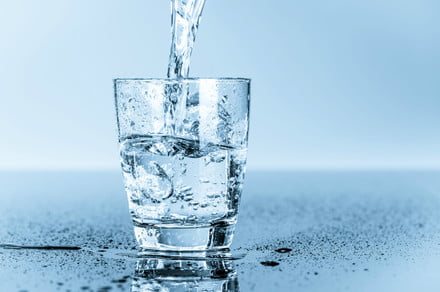[vimeo 345927935 w=100 h=100]
From DIY water-testing kits to checking out the U.S. Environmental Protection Agency’s databases, there are various ways you can go about testing whether or not water is safe to drink before you elect to pour it down your throat. Scientists from the University of Missouri and Mexico’s Universidad de Guanajuato have come up with an alternative solution — and it’s a high tech doozy!
Their approach involves using a tattoo removal laser machine to flash out a series of brief bursts of light, each lasting around 10 nanoseconds. These flashes of light travel through a fiber optic cable, which is wrapped on one end with paint-on liquid electrical tape. The cable’s end is submerged in the liquid to be tested, converting the laser light into sound. The sound is recorded by a microphone, and the data analyzed in real time.
In short, it uses sonar technology to measure the purity of liquid. It does this by measuring the length of time which passes between each laser flash and the sound reaching the microphone. This allows the researchers to work out how quickly sound waves are traveling in the water — which lets them establish whether there is something in the water that is causing the sound waves to not move as fast as they should.
“This phenomenon is known as the photoacoustic effect,” Dr. Gerardo Gutiérrez Juárez at the Universidad de Guanajuato, told Digital Trends. “The photoacoustic effect is the generation of sound with light. If the PA effect is produced by a nanosecond or pulsed lasers, the frequency of generated sound is in the range of the ultrasound. … With our technology, we can measure the velocity of sound in fluids. This physical magnitude is very important because is correlated with other physical magnitudes like density, which are hard to measure.”
What the technology doesn’t do — unless some other liquid analysis technologies we’ve covered — is to tell you what is present in the liquid. It will tell you whether a liquid sample is as pure as you hope it to be, but not what is contaminating it or the concentration of this contaminant. It is a quick and easy method of forensic quality control.
A paper describing the work, titled “Laser-induced sound pinging: A rapid photoacoustic method to determine the speed of sound in microliter fluid volumes,” was recently published in the journal Sensors and Actuators, B: Chemical.
Editors’ Recommendations
- Amazing smart glass can recognize numbers, no added tech required
- Smartglasses use eye-tracking to make sure whatever you look at is in focus
- Microsoft Surface Hub 2S hands-on review
- This lifesaving wearable could diagnose strokes more accurately
- Ignore the scaremongers. 5G won’t interfere with weather satellites. Here’s why

